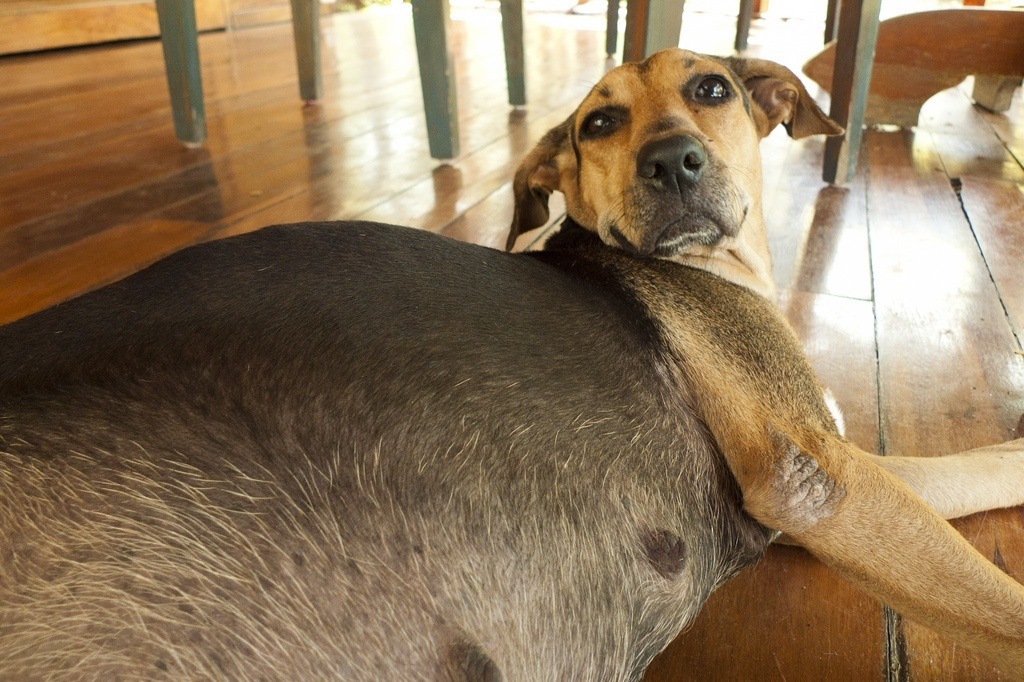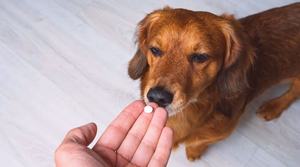Watching a dog go through pregnancy and give birth to puppies can be an exciting and special time, but owners who are going through the process for the first time can find it a little daunting.
Knowing about the different pregnancy stages and what to expect from your expecting dog can help ease any unsureness you might be feeling about the whole situation.
The truth is, aside from making sure your dog is healthy and comfortable, there isn’t much that owners need to do to help their dog along.
Pregnancy and birth is a natural process, and aside from knowing what signs to look for and keeping an eye out for any problems, owners should try not to interfere too much.
How long are dogs pregnant for?
A dog’s gestational period is roughly 63 days or nine weeks.
It varies depending on when your dog conceived, so you should be prepared for puppies anytime, but usually between days 58 to 68.
Consult your vet if you think your dog is pregnant
If you’re purposely breeding your dog, is in heat and could be pregnant, you might be wondering what to do next.
One of the first things you should do if you think your dog is pregnant is consult your vet. It can be hard to tell if a dog is pregnant before 4 weeks, when the foetuses may first be felt with palpation.
By day 30, the pregnancy can be determined with a hormone test.
In the initial stages of pregnancy, it’s important to give your vet all the information you have about when conception might have happened.
It’s also important to make sure the dog doesn’t have any health issues like infections or parasites. Your vet can help clear those things up, so they aren’t passed on to the puppies during or after birth.
If everything goes smoothly, you may only need to see your vet twice.
Once for early detection and once at around 35-45 days when you can see the foetuses’ skeletons on an X-ray.
Dog Pregnancy Changes By Month
The American Kennel Club does a good job outlining what to expect during each month of a dog’s pregnancy, including what symptoms to look out for.
Here are some of the main details that owners should be aware of:
Month One
During the first month of pregnancy, the embryos travel to the uterine horns and embed. At three weeks, the foetuses start to form.
While some dogs won’t show any symptoms at this stage, a few things to look out for include:
- Increased appetite
- More affection
- Decreased physical activity
- Vomiting (morning sickness)
During the first month, your dog should be kept on a high-quality maintenance diet and be eating the regular amount based on her weight.
Month Two
At this stage the foetuses are developing quickly.
Your dog may start nesting toward the end of the month.
A few symptoms to look out for during month two are:
- Weight gain
- Increased urination
- Clear, odorless vaginal discharge
- Behavioral changes
From approximately six weeks on, owners should increase their pregnant dog’s food by 10% per week.
Month Three
Month three is when whelping (the birthing process) starts and the puppies prepare by taking their position in the birthing canal.
Symptoms to look out for during month three are:
- Restlessness
- Waist gets smaller as puppies move to birth canal
- Loss of appetite
- Drop in body temperature
Starting on week nine, owners should switch their dog to a food made for pregnant dogs, a performance diet, or puppy food for the duration of her pregnancy until her puppies are weaned.
At this stage, the dog should be going for short frequent walks because she won’t want to be far from home but will need to urinate frequently.
She should also avoid taking part in too much energetic activity.
Three Stages of Parturition (aka. Giving Birth)
To prepare for the final stages of pregnancy, owners should lay out an area with clean towels.
This is where the dog can nest before giving birth, so it’s important that she gets familiar with the space. It should be somewhere where she feels comfortable.
Owners can expect parturition to start if they notice their dog has a yellow, gelatinous discharge, which usually happens up to two days before.
Another sign that the process is starting is when the dog’s rectal temperature drops to about 97 degrees about 12-24 hours beforehand.
Knowing the stages of labor is important because it will tell you if the dog’s labor is progressing normally. For most births, owners do not need to get involved at all (hovering or interfering can delay the birthing process).
Stage One
This stage, also known as pre-labor, lasts anywhere from two to 36 hours.
Symptoms of this stage include things like pacing, shivering, vomiting, loss of appetite, nest-building, and anxiety.
Stage Two
Stage two, or true labor, usually lasts about two hours and is characterized by straining, contractions, appearance of the placental sac, and the birth of a puppy.
Stage Three
Stage three of labor, called expulsion, happens when the placenta passes either with a puppy or after a puppy is born.
At this stage, greenish fluid is normal.
When to call your vet?
If everything goes smoothly, your vet will not need to be involved or consulted during the birthing process.
However, there are some warning signs that owners should keep an eye out for:
- If your dog is overdue
- There is black or red, bad smelling discharge
- Stage one lasts more than 36 hours
- Stage two lasts more than 2 hours
- There are more than three hours between the birth of two puppies
- The mother doesn’t remove the placental membranes around the puppies’ heads or sever the umbilical cord (in which case, you will need to do these things yourself)
- Puppies aren’t breathing after one minute
Conclusion
A dog’s pregnancy is much shorter than a human’s and therefore it goes by quickly.
As an owner, it’s your job to make sure your dog is well taken care of throughout this time. You should be aware of how dog pregnancy works, including the various stages and symptoms to look out for.
During birth, owners shouldn’t intervene unless they notice that something is going wrong.
Birthing is a natural process and your dog will most likely know what to do, just like her maternal instincts should kick in when her puppies are born.
Featured Photo: Colin and Sarah Northway/Flickr
References
Pavia, Audrey, The Labrador Retriever Handbook Published 2001 by Barrons Educational Series Inc. ISBN:0-7641-1530-8.
Pinney, Chris C. German Shorthaired Pointers A Complete Pet Owner's Manual 1998 by Barrons Educational Series Inc. ISBN: 0-7641-0316-4.




